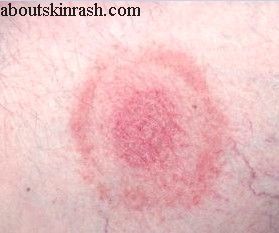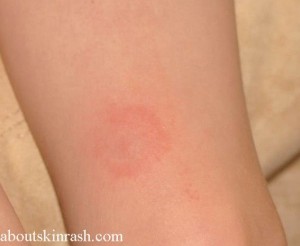A tick bite rash results from the bite of several different species of ticks. Ticks are microscopic in size like a pin head.
Ticks have been known to populate the earth since as far as ninety million years ago, with around eight hundred different species. However, only two families or kinds of ticks are known to cause illnesses or diseases in humans. They are the hard ticks that have a hard covering on their backs and the soft ticks that do not have any hard plate coverings.
A complex life cycle that involves eggs, larvae, nymphs as well as adult female and male ticks comprises the life span of most ticks. Other than eggs, all the forms of ticks require blood meals for survival. Most male ticks die after mating. It is the female tick that bites the most leading to transmission of diseases. Ticks do not have wings to help them fly, neither can they jump. They simply crawl onto the body of hosts. There is no preference for a particular type of host and ticks can feast on all animals that include humans.
Ticks usually die if they are unable to avail of a blood meal, but some species have been known to survive nearly a year without any blood meals. Hard ticks attach themselves to the host and can feed for hours and days. The feeding session may stop when the tick is full of blood and swells up. This is when the ticks transmit the germs to the hosts.
Soft ticks generally tend to feed for less than an hour and can transmit pathogens within minutes of a bite, thereby leading to the development of a tick bite rash.
Ticks can cause tick bite rash and other disease across species. The germs enter the skin and the blood of the host through the saliva and other secretions of the tick.
Tick bite rash symptoms
Some of the signs and symptoms of a tick bite rash are listed below:
- The tick bite generally does not cause any pain and tends to remain so even after the blood feast has completed and the tick has fallen off.
- However, the bite site may develop a characteristic tick bite rash after sometime. This may lead to severe itching, redness, burning sensations and in rare cases localized pain of the affected areas in some people.
- Increased sensitivity or allergies to the secretions of the ticks in certain people can lead to severe instances of tick bite rash as well as inflammation and swelling of the affected areas, shortness of breath, numbness and/or paralysis.
- On rare occasions, a tick bite rash may result in severe symptoms such as fever, respiratory problems, vomiting, weakness, palpitations, swelling, headache and disorientation or confusion
Since most ticks are active carriers of pathogens, a tick bite rash may result in the development of the following diseases:
- The Rocky Mountain spotted fever caused due to the American dog tick, the Rocky Mountain wood tick and the brown dog tick are transmitters of the Rickettsia bacteria.
- The Lyme disease caused due to deer ticks that transmit the Borrelia bacteria
- Babesiosis caused by hard ticks that carry the protozoan Babesia.
- Ehrlichiosis caused by one star ticks transmit the Ehrlichia ewingii and Ehrlichia chaffeensis species of bacteria.
- Tick-borne relapsing fever caused by African ticks transfer the Borrelia bacteria
- Tularemia caused by American dog tick or lone star tick that transmit the Francisella tularensis bacteria
- Anaplasmosis caused by hard ticks that carry the Anaplasma phagocytophilum bacteria
- Colorado tick fever caused by hard ticks that transmit the RNA virus Coltivirus.
- Powassan encephalitis caused by hard ticks that carry the RNA arbovirus known as the Powassan encephalitis virus.
- Q fever caused by hard ticks that carry a bacterium called Coxiella burnetii.
- Southern tick-associated rash illness caused by lone star tick wherein the infectious agent remains unidentified as yet.
- Most of these diseases show the symptoms of tick bite rash listed above.
Causes of tick bite rash
- A tick bite rash is caused due to the bite of different species of ticks that carry pathogens.
- The ticks are usually present in densely wooded areas in shrubs and tall grasses. They crawl onto the hosts and then feed on their blood leading to the development of a characteristic tick bite rash.
- Increased exposure of skin in the outdoors increases the risk to developing a tick bite rash.
Tick bite rash treatment
Some of the methods to treat a tick bite rash are as follows:
- The tick bite needs to be cleaned with an antibiotic or a cleansing cream.
- An itchy tick bite rash has to be treated with oral or topical medications that contain diphenhydramine
- A tick bite rash that leads to other diseases has to be treated as per the diagnosis, which may sometimes require intravenous administration of antibiotics.
- One can prevent the development of a tick bite rash by removing the tick as soon as it attaches itself to the skin. In addition, if one is visiting a densely wooded area, one must wear adequate clothing that covers all areas of the skin, gloves and long boots to avoid a tick bite that may lead to the development of a tick bite rash.
Tick bite pictures



